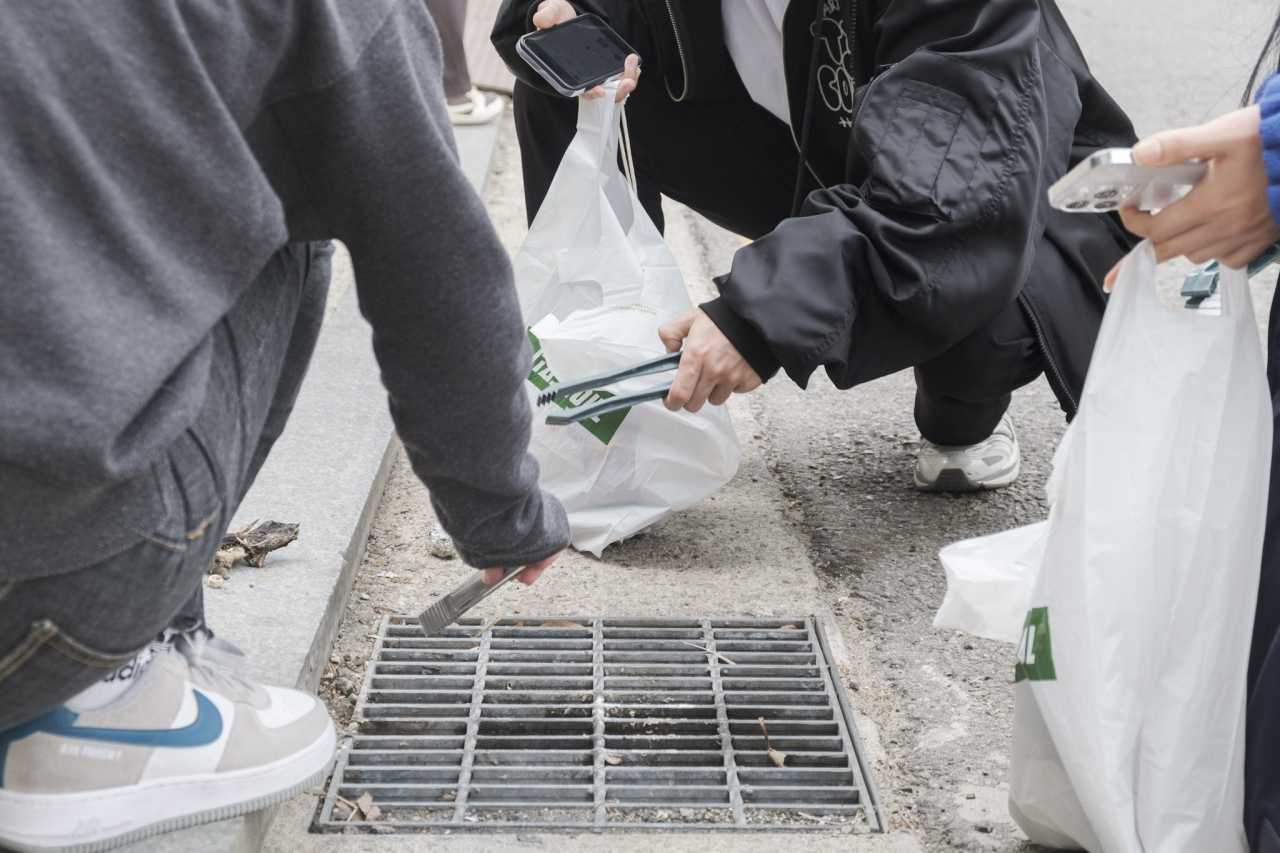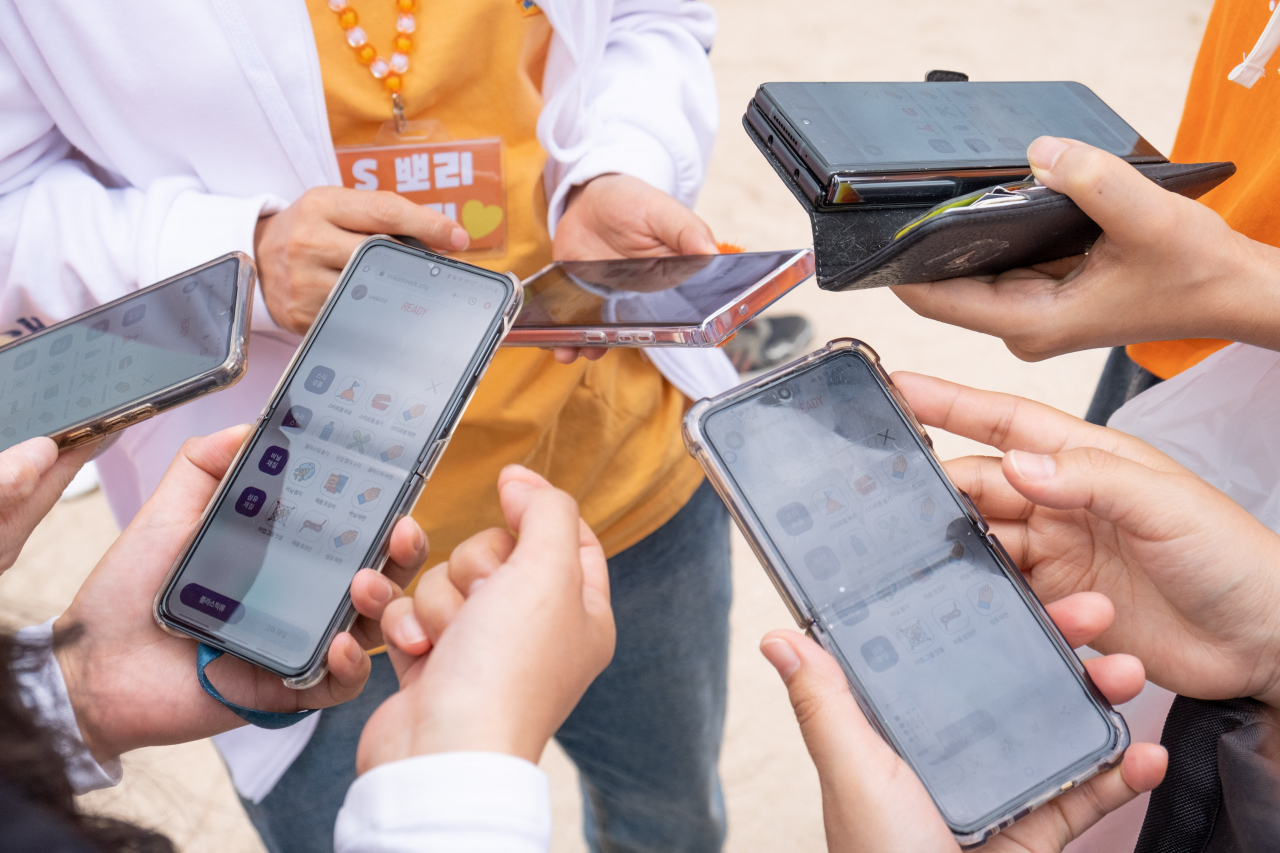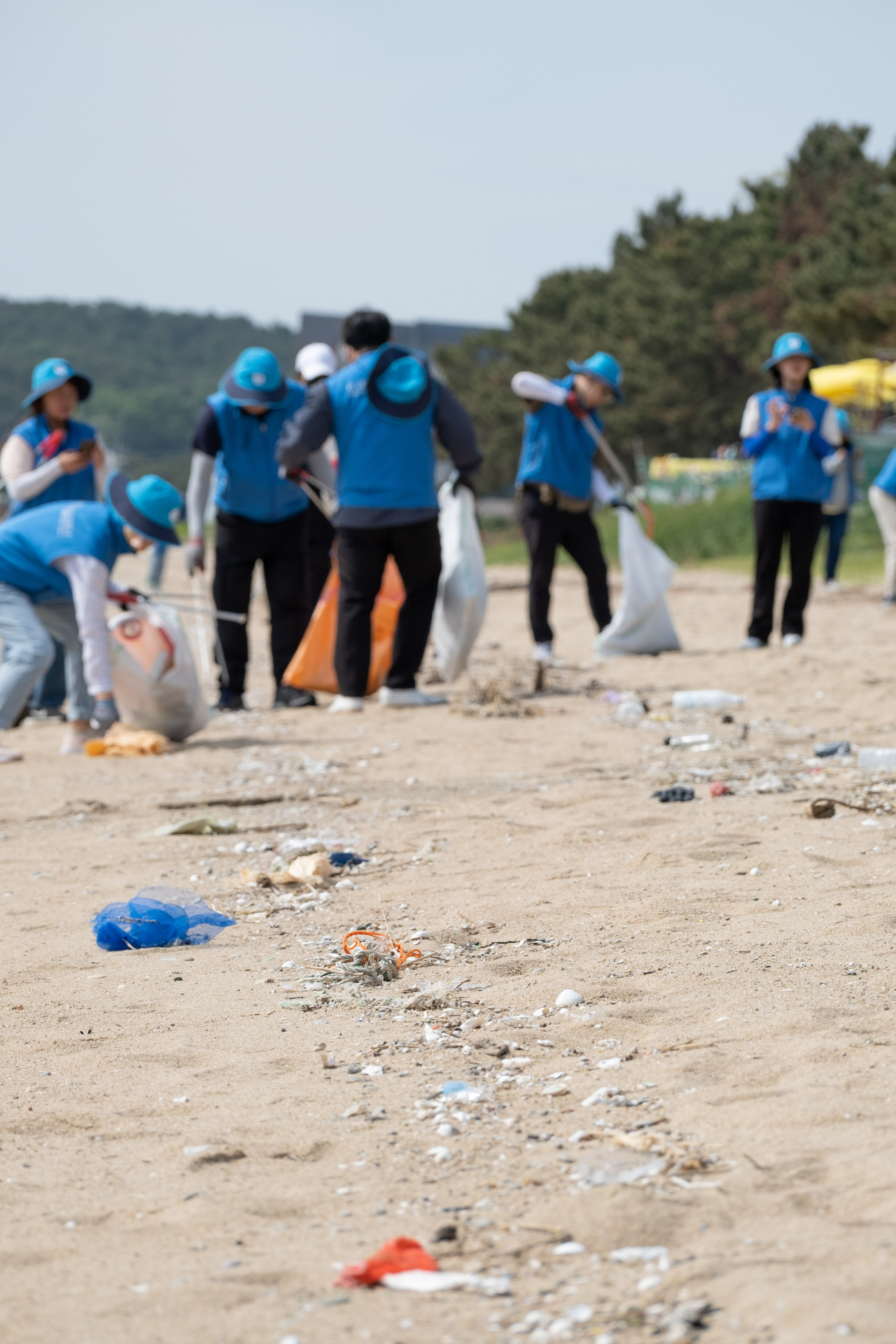 |
Ploggers pick up litter found in sinkholes to prevent it from flowing into waterways and ultimately ending up in the ocean. (Ita Seoul) |
When thinking of Hongdae district, a popular hotspot in Seoul, most people would typically imagine bustling streets teeming with trendy cafes, bars and lively busking performances.
However, for An Ga-young, Hongdae is the dirtiest place she has ever encountered -- a realization that struck her during a plogging activity she participated in February. Alongside 20 other ploggers, she picked up 224 pieces of trash -- predominantly cigarette butts -- during the 37-minute session.
The term “plogging” was coined in 2016 by Swedish environmental activist Erik Ahlstrom, combining the words “jogging” and “plocka,” which means “to pick” in Swedish. He introduced this concept to promote the practice of picking up litter while jogging.
“I never realized that Hongdae was such a filthy place, overrun with rubbish,” said An, a 28-year-old activist who has participated in 50 plogging sessions. “There were simply too many pieces of trash to pick up.”
Combining physical fitness and environmental awareness, plogging has gained popularity worldwide, including in Korea.
At the forefront of the plogging movement in Korea is the Seoul-based, youth-led environmental nonprofit organization Ita Seoul. In November 2022, the organization introduced a mobile application that allows individuals to document their litter-picking endeavors and share them with their communities.
 |
Ita Seoul’s plogging app displays the specific types of litter An Ga-young collected from the streets of the Hongdae district in Seoul. (Ita Seoul) |
The process is simple -- anyone interested in plogging can register on Ita Seoul's mobile app. As they engage in plogging activities and collect litter, they can select the specific type of trash from nine categories available on the app, ranging from plastic to cigarette butts. Once their plogging session is over, the app generates a summary that displays the duration of the activity and provides information on the quantity and types of litter collected.
“We wanted to make litter gathering a fun activity, similar to playing the game Pokemon Go,” said Hanyu Sarang, head and founder of Ita Seoul. “To make it engaging, it was important for us to create a platform where they can document their activities and share them with others.”
Through the app, users can plan and organize plogging sessions, upload pictures of their plogging activities and share their accomplishments. The app also includes a ranking system that shows the top performers based on the quantity of trash collected.
The key feature of Ita Seoul’s plogging initiative is the utilization of location-based tracking and the archiving of data to track littering patterns.
Through GPS technology, ploggers’ sharing of litter picking activities creates a comprehensive database of trash. As ploggers input the information about the quantity and type of litter they pick up, the app automatically captures and stores the data, including the location and duration of the activity.
“We have information about more than 2 million pieces of litter and their location. The goal is to use this data on the distribution, density and types of litter in different areas and help authorities develop targeted strategies to address the waste problem,” Hanyu said.
 |
Ploggers pick up litter from the beach in Incheon. (Ita Seoul) |
Since the launch of the app, approximately 18,000 people have participated in plogging nationwide, collectively contributing 71,000 hours of effort as of June 27. This resulted in the collection of 2.28 million pieces of trash.
The most common type of litter collected was cigarette butts, accounting for 56 percent of the total. Paper, primarily disposable paper cups, and polyethylene plastic -- commonly used for plastic bags -- make up the second dominant types of litter, each at 11 percent. According to estimates by Ita Seoul, the total amount of waste collected corresponds to a reduction of 34,275 kilograms of carbon emissions.
While individual efforts to pick up litter from the streets are important, they do not fully address the root of the problem—the sheer amount of waste generated and discarded on a daily basis.
However, Hanyu believes that the trash database can be a starting point.
“The trash database created by individuals can serve as solid evidence that can be used to pressure the government and businesses to make drastic changes to address the waste problem,” she said.







